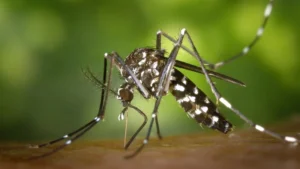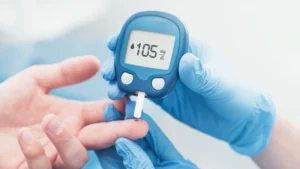Asthma attack vs panic attack is two very different medical conditions that can sometimes be confused with one another. While asthma is a chronic respiratory disease that affects the airways, panic attacks are sudden episodes of intense fear or anxiety. However, the symptoms of both conditions can overlap, leading to misdiagnosis and inappropriate treatment. In this article, we will explore the differences between asthma attacks and panic attacks, and discuss the importance of proper diagnosis and treatment for each.
What is Asthma Attack?
Asthma is a chronic respiratory disease that affects the airways. An asthma attack occurs when the muscles surrounding the airways tighten, causing them to become inflamed and narrow.
This makes it difficult for air to flow in and out of the lungs, which can lead to symptoms such as coughing, wheezing, shortness of breath, and chest tightness. Here are some key details about asthma attacks:
Definition
- Asthma is a chronic respiratory disease that affects the airways
- Asthma attacks occur when the muscles surrounding the airways tighten, causing them to become inflamed and narrow
Causes and Triggers
- Asthma attacks can be triggered by a variety of factors, including allergens (such as pollen, dust mites, and pet dander), irritants (such as smoke and air pollution), exercise, cold air, stress, and respiratory infections (such as the common cold)
- Some people with asthma may also have triggers that are unique to them, such as certain foods or medications
Symptoms
Symptoms of an asthma attack can vary in severity, but may include:
- Coughing (especially at night or early in the morning)
- Wheezing (a whistling or squeaking sound when breathing)
- Shortness of breath
- Chest tightness or pain
- Rapid breathing
- Difficulty speaking or catching one’s breath
Read More: Ketamine Therapy for Anxiety

Treatment
- The goal of asthma treatment is to manage symptoms and prevent future asthma attacks
- Treatment options may include:
- Medications, such as inhaled bronchodilators (which relax the muscles around the airways) and inhaled corticosteroids (which reduce inflammation in the airways)
- Avoidance of triggers (such as allergens and irritants)
- Monitoring lung function with a peak flow meter
- Developing an asthma action plan with a healthcare provider
What is a panic attack?
A panic attack is a sudden episode of intense fear or anxiety. It can be accompanied by physical symptoms such as heart palpitations, sweating, and shaking. Panic attacks are often unexpected and can occur without any apparent trigger. Here are some key details about panic attacks:
Definition
- A panic attack is a sudden episode of intense fear or anxiety
- It can be accompanied by physical symptoms such as heart palpitations, sweating, and shaking
Causes and Triggers
- Panic attacks can be triggered by a variety of factors, including stress, anxiety, and phobias (such as a fear of heights or enclosed spaces)
- Some people may also experience panic attacks as a side effect of medication or as a symptom of another medical condition (such as hyperthyroidism)
Read More: Drawbacks of Smoking on An Empty Stomach

Symptoms
Symptoms of a panic attack can vary in severity but may include:
- Heart palpitations or chest pain
- Sweating or shaking
- Shortness of breath or a feeling of choking
- Nausea or stomach pain
- Dizziness or lightheadedness
- Fear of losing control or going crazy
- Fear of dying
Treatment
- Treatment for panic attacks may include medication and therapy
- Medications may include antidepressants, anti-anxiety drugs, and beta blockers
- Therapy may include cognitive behavioral therapy (CBT) or exposure therapy
- Relaxation techniques such as deep breathing, meditation, and yoga may also be helpful
How to tell the difference between an asthma attack and a panic attack
While asthma attacks and panic attacks can share some symptoms, there are several key differences between the two.
It is important to be able to distinguish between the two conditions in order to receive proper diagnosis and treatment.
Here are some ways to tell the difference between an asthma attack and a panic attack:
Symptoms
- Asthma attacks typically involve respiratory symptoms such as wheezing, coughing, and shortness of breath
- Panic attacks typically involve a combination of physical symptoms (such as heart palpitations, sweating, and shaking) and psychological symptoms (such as fear of losing control or going crazy)
- While both conditions can cause chest tightness, the sensation is usually more localized to the chest during an asthma attack and can be accompanied by difficulty breathing
- Panic attacks may also be accompanied by gastrointestinal symptoms such as nausea and stomach pain

Triggers
- Asthma attacks are often triggered by allergens, irritants, exercise, and respiratory infections
- Panic attacks are often triggered by stress, anxiety, and phobias
Duration
- Asthma attacks typically last for several minutes to several hours and can be relieved with medication such as bronchodilators
- Panic attacks typically last for several minutes to an hour and may resolve on their own, although medication and therapy can be helpful in managing symptoms
Read More: Nose Bleeding in High Altitude
Testing
- If you are experiencing symptoms of an asthma attack, your healthcare provider may perform lung function tests such as spirometry or a peak flow test to diagnose the condition
- If you are experiencing symptoms of a panic attack, your healthcare provider may perform a physical exam and order blood tests to rule out other medical conditions
The importance of proper diagnosis
Proper diagnosis of asthma and panic attacks is important for several reasons, including:
Effective Treatment
- Accurate diagnosis allows for appropriate treatment, which can help manage symptoms and improve quality of life
- Asthma attacks can be treated with medication such as bronchodilators and anti-inflammatory drugs, while panic attacks can be managed with medication and therapy
Prevention of Complications
- Failure to properly diagnose and treat asthma attacks can lead to complications such as respiratory failure and even death
- Panic attacks can also have serious consequences if left untreated, such as an increased risk of developing depression and other anxiety disorders

Avoidance of Misdiagnosis
- Misdiagnosis can lead to unnecessary and potentially harmful treatments
- Asthma may be misdiagnosed as panic disorder or vice versa, as the two conditions can share similar symptoms
Proper Management
- Accurate diagnosis allows for proper management of symptoms and triggers, which can improve overall health and reduce the need for emergency care
- Management of asthma may involve identifying and avoiding triggers such as allergens and irritants, while management of panic attacks may involve stress reduction techniques and exposure therapy
Treatment for asthma and panic attacks
Treatment for asthma and panic attacks varies depending on the severity and frequency of symptoms. Here are some common treatments for each condition:
Asthma
- Bronchodilators: These medications work by relaxing the muscles in the airways, making it easier to breathe. Short-acting bronchodilators are used for quick relief of symptoms during an asthma attack, while long-acting bronchodilators are used as a maintenance treatment.
- Anti-inflammatory drugs: These medications work by reducing inflammation in the airways, making them less likely to become irritated and constricted. Inhaled corticosteroids are the most common type of anti-inflammatory medication used for asthma.
- Combination medications: Some medications combine both bronchodilators and anti-inflammatory drugs for more comprehensive asthma management.
- Immunomodulators: These medications work by modifying the immune system’s response to allergens, reducing the severity of asthma symptoms.
Panic Attacks
- Medications: Anti-anxiety medications such as benzodiazepines and selective serotonin reuptake inhibitors (SSRIs) are commonly used to manage panic attacks. Benzodiazepines work quickly to calm the body’s response to stress, while SSRIs are taken daily to prevent panic attacks from occurring.
- Cognitive Behavioral Therapy (CBT): This form of therapy focuses on identifying and changing negative thought patterns and behaviors that contribute to panic attacks. CBT may involve relaxation techniques, exposure therapy, and other methods.
- Mindfulness-Based Stress Reduction (MBSR): This approach involves training in mindfulness meditation and body awareness techniques to reduce stress and anxiety.
- Other Therapies: Other forms of therapy such as Eye Movement Desensitization and Reprocessing (EMDR) and Acceptance and Commitment Therapy (ACT) may also be used to manage panic attacks.

Conclusion
In conclusion, while asthma attacks and panic attacks can share some similar symptoms, they are distinct conditions that require proper diagnosis and treatment. It is important to seek medical attention if you are experiencing symptoms of either condition in order to receive an accurate diagnosis and appropriate treatment. Effective management of these conditions can improve the quality of life and prevent complications.
FAQs
- Can asthma and panic attacks occur together?
Yes, it is possible for someone to have both asthma and panic attacks. In some cases, the symptoms of one condition may trigger the other.
- Can stress trigger asthma attacks?
Yes, stress can be a trigger for asthma attacks in some individuals. It is important to identify and manage stress in order to prevent asthma attacks.
- Can panic attacks be cured?
While panic attacks cannot be cured, they can be effectively managed with a combination of medication and therapy.
- Is it possible to outgrow asthma?
Some children with asthma may outgrow the condition as they get older, while others may continue to experience symptoms throughout their life.
- Can exercise induce asthma attacks?
Yes, exercise-induced asthma is a common condition that causes asthma symptoms during physical activity. Proper management of exercise-induced asthma can involve warm-up and cool-down periods, and use of bronchodilators.
- Is it safe to use benzodiazepines for panic attacks?
While benzodiazepines can be effective in managing panic attacks, they can also be habit-forming and may have side effects. It is important to work with a healthcare professional to determine the best course of treatment.
- Can asthma attacks be fatal?
Yes, severe asthma attacks can be life-threatening if not properly managed or treated.
Medical References
- Global Initiative for Asthma. (2022). Global strategy for asthma management and prevention. https://ginasthma.org/wp-content/uploads/2022/01/GINA-2022-main-report_30Jan22-WMS.pdf
- National Heart, Lung, and Blood Institute. (2021). Asthma. https://www.nhlbi.nih.gov/health-topics/asthma
- American College of Allergy, Asthma & Immunology. (n.d.). Exercise-induced asthma. https://acaai.org/asthma/exercise-induced-asthma
- American Psychiatric Association. (2013). Diagnostic and statistical manual of mental disorders (5th ed.). https://doi.org/10.1176/appi.books.9780890425596
- National Institute of Mental Health. (2016). Panic disorder: When fear overwhelms. https://www.nimh.nih.gov/health/publications/panic-disorder-when-fear-overwhelms/index.shtml
- Roy-Byrne, P. P., & Craske, M. G. (2006). Panic disorder. The Lancet, 368(9540), 1023-1032. https://doi.org/10.1016/S0140-6736(06)69418-X
- Hofmann, S. G., Asnaani, A., Vonk, I. J. J., Sawyer, A. T., & Fang, A. (2012). The efficacy of cognitive behavioral therapy: A review of meta-analyses. Cognitive Therapy and Research, 36(5), 427-440. https://doi.org/10.1007/s10608-012-9476-1



